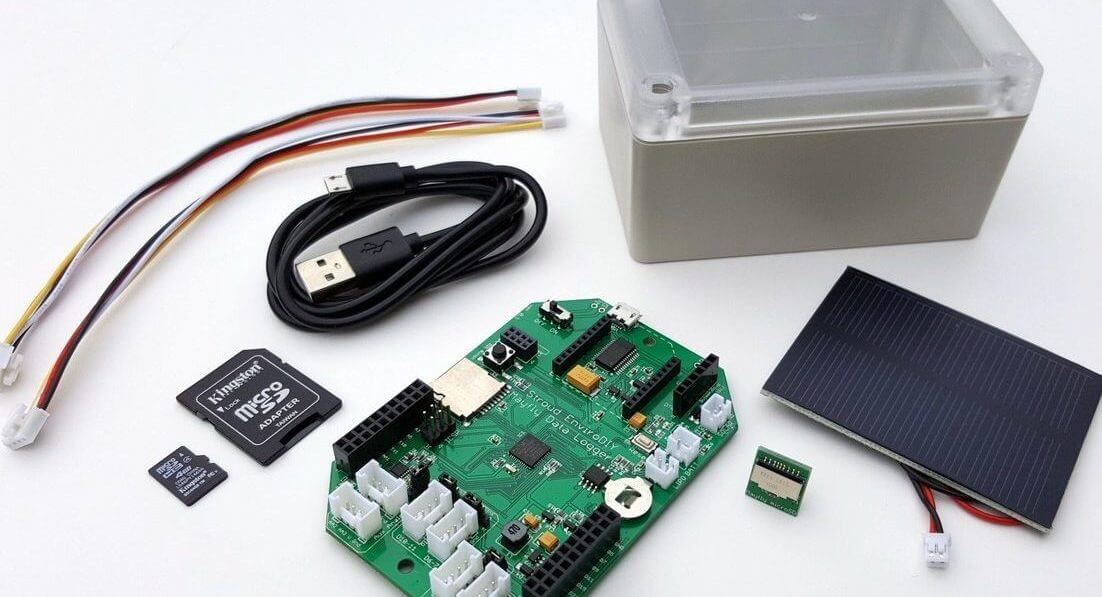Emerging and low-cost monitoring technologies

Technology designed to make your monitoring program faster, cheaper, and more effective
New technologies continue to shape the way we collect water quality data. Adopting today’s technologies could bring new capabilities to your water monitoring program and a greater amount, variety, and quality of collected data. This page is not exhaustive, but River Network does its best to capture advances in water quality monitoring technology by working with partners and our members nationwide. If you’re aware of a novel technology that helps water monitors collect data, and think it should be featured on this page, please let us know by contacting Adam Griggs
Smart-phone enabled water quality sensors
Today’s smart phones and tablets are powerful computers and more than capable of operating water quality sensors or collecting data in the field. In addition, smart devices can utilize their built in cameras, GPS, and other apps to make your data collection more stream-lined and powerful.
For example, researchers are starting to develop low-cost water sensors that can plug into smart phones and are even trying to convert phone cameras into field spectrophotometers. Water quality sensor manufacturers are also getting involved, although their multiparameter sensors are still fairly expensive. Below are some of the water quality sensors available today that you can operate with a smart device:
- The In-situ smarTROLL Multiparameter Handheld device collects 14 water quality parameters which can be instantly viewed and shared via Android and iOS mobile devices.
- This EXO device allows for a Bluetooth connection between an EXO sonde and a device running Windows OS.
- Michigan Tech Research Institute has developed a low-cost 3d printable radiometer that uses a smart phone or tablet to rapidly assess and measure Harmful Algae Blooms (HABs).
- Sensorex recently discontinued their Smart Aqua Meter (SAM1) series but we’re including them as examples of low-cost smart sensors
DIY – Building your own real-time, deployable sensors
Looking to save on costs and increase the flexibility of your monitoring programs? Many people are now building their own real-time water quality equipment. Low-cost probes, circuit boards, and other equipment paired with open-source software and a little ingenuity can create powerful, weatherproof, real-time sensors.
Intimidated? You don’t have to start from scratch! Training workshops are offered to help interested groups get started, and robust on-line communities are filled with well-documented DIY projects. You may also be interested in partnering with a local university or vocational program to have their students build the devices for your sensor network. Below are some online communities and places where you can buy the physical circuit boards and sensors you’ll need.
- EnviroDIY – Program, products, and an online community maintained by Stroud Water Research for building real-time multi-parameter water quality sensors. Click here to watch a webinar to get started.
- The Riffle – An open-source water monitoring approach developed and maintained by the Public Lab.
- Arduino – An open-source electronic platform for creating interactive objects and robots, or in our case – water quality monitoring equipment!
- AtlasScientific – Source for DIY water quality probes
Other resources and efforts for expanding low-cost monitoring technologies
- Pisces-Intel Low Cost Water Quality Monitoring National Survey – Pisces Foundation surveyed groups monitoring water quality to better understand gaps between current and desired monitoring capabilities.
- Low Cost Monitoring Needs Assessment Report from the Chesapeake Conservancy – The Chesapeake Conservancy surveyed the landscape of water quality monitoring and summarized 1) the different reasons for monitoring and their needs and challenges and 2) a resource guide on monitoring technologies. The report is focused on the Chesapeake region, but much of the information is useful elsewhere.
- The EPA’s Nutrient Sensor Challenge is looking for unique and effective ways of using nutrient sensors and their data to improve management of nutrient pollution in water bodies.




